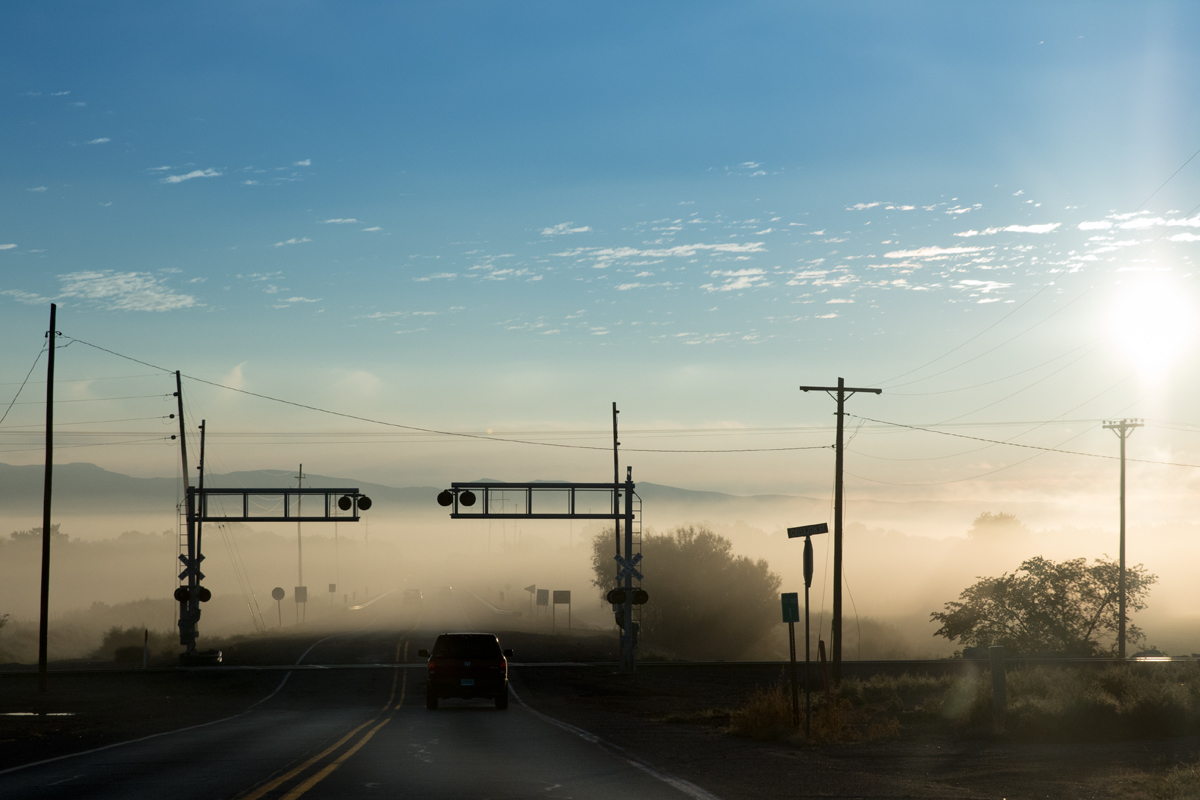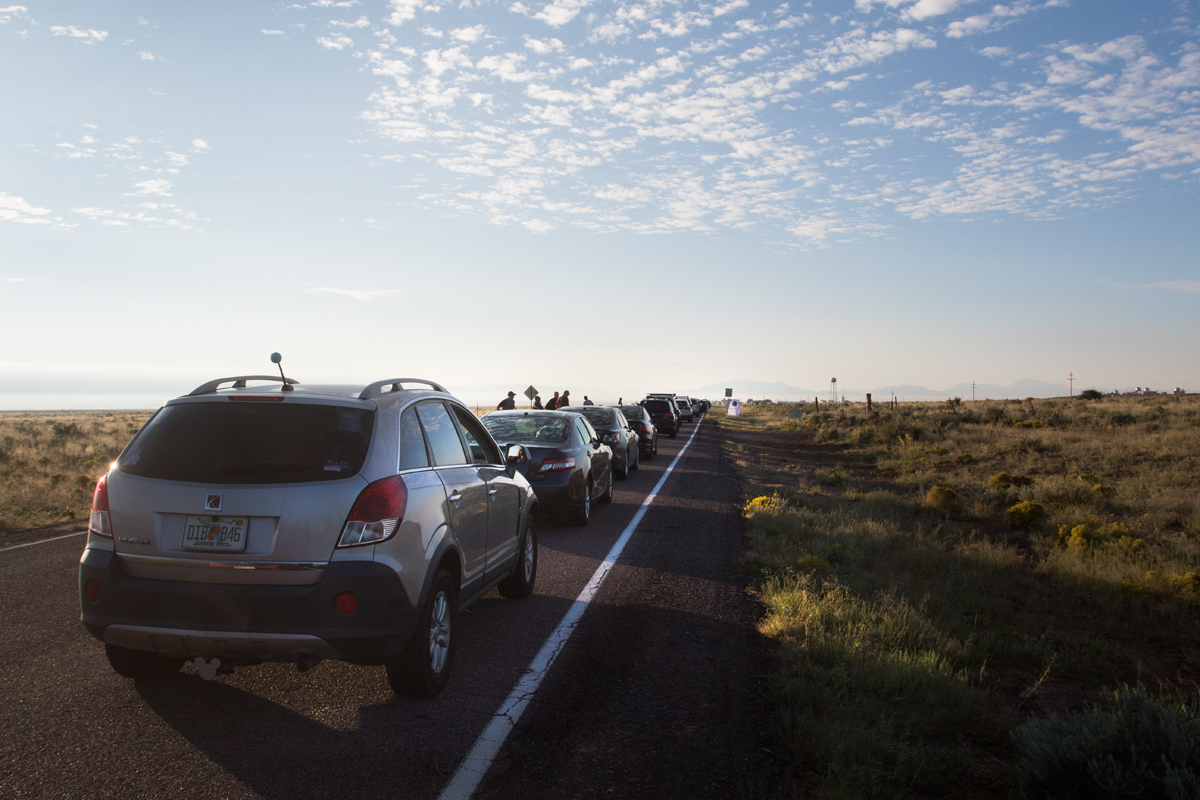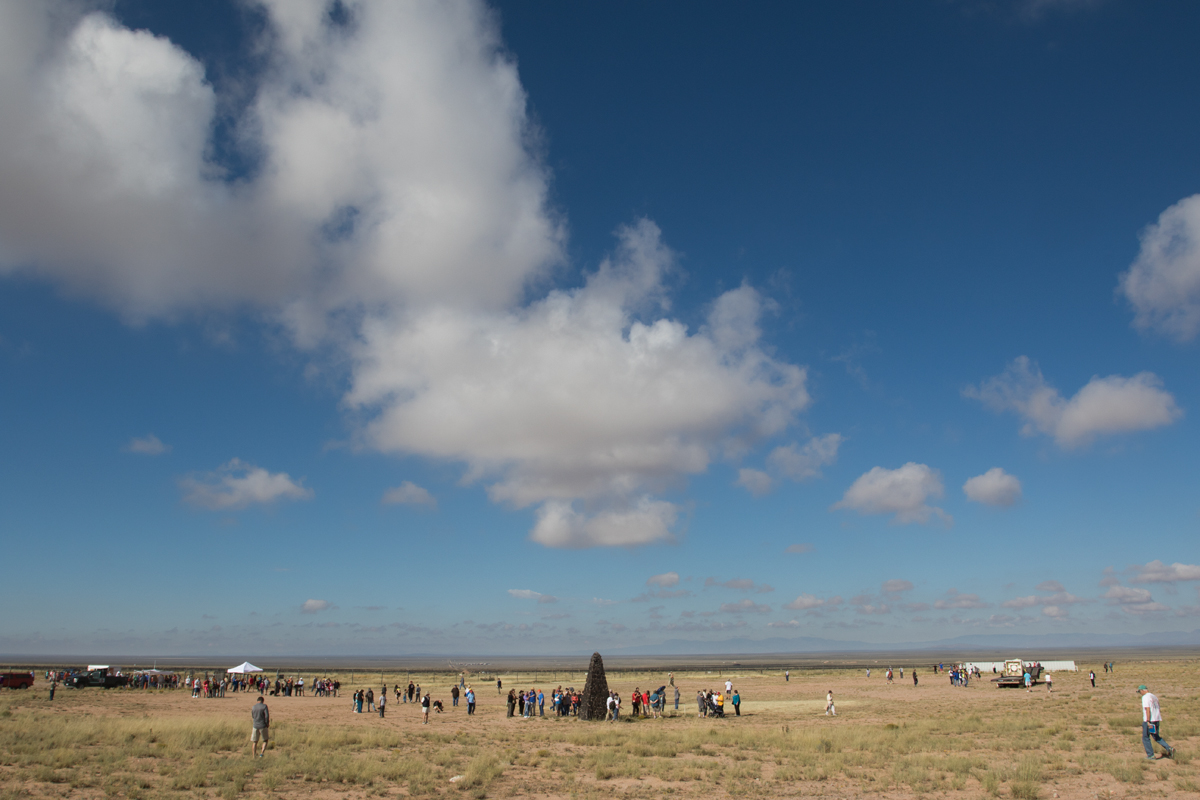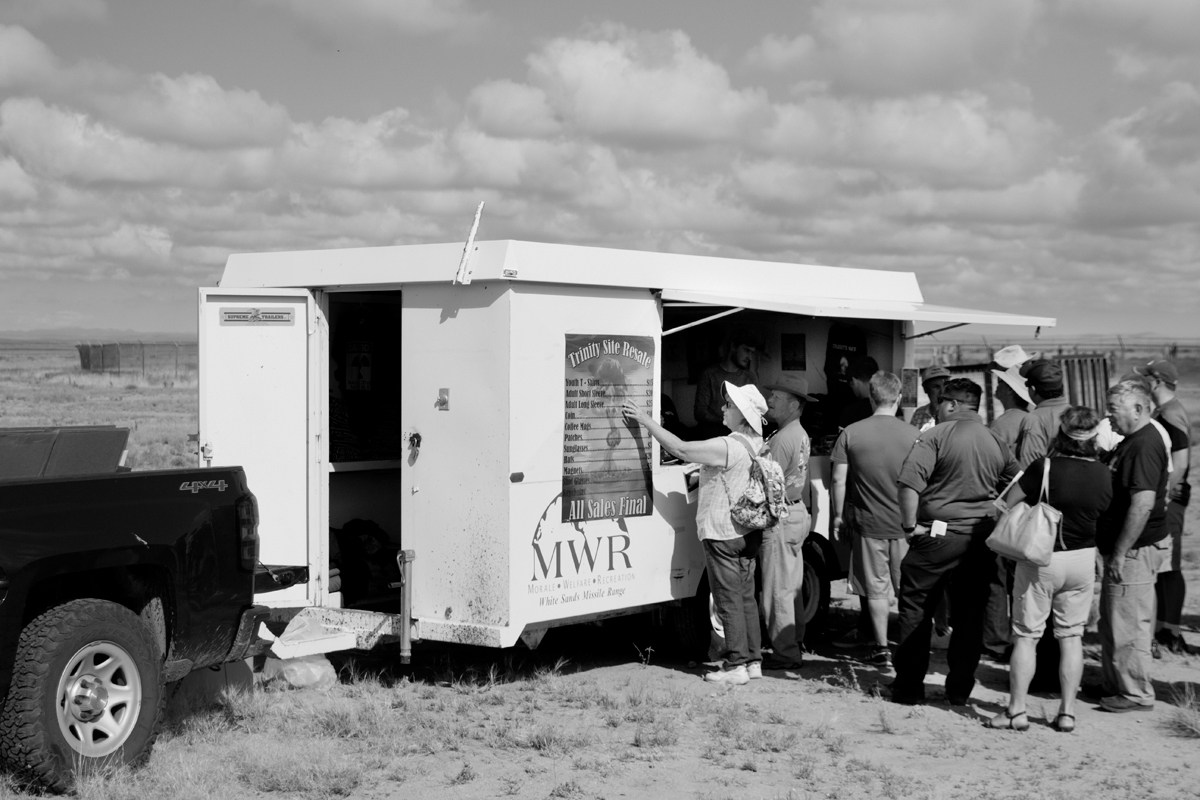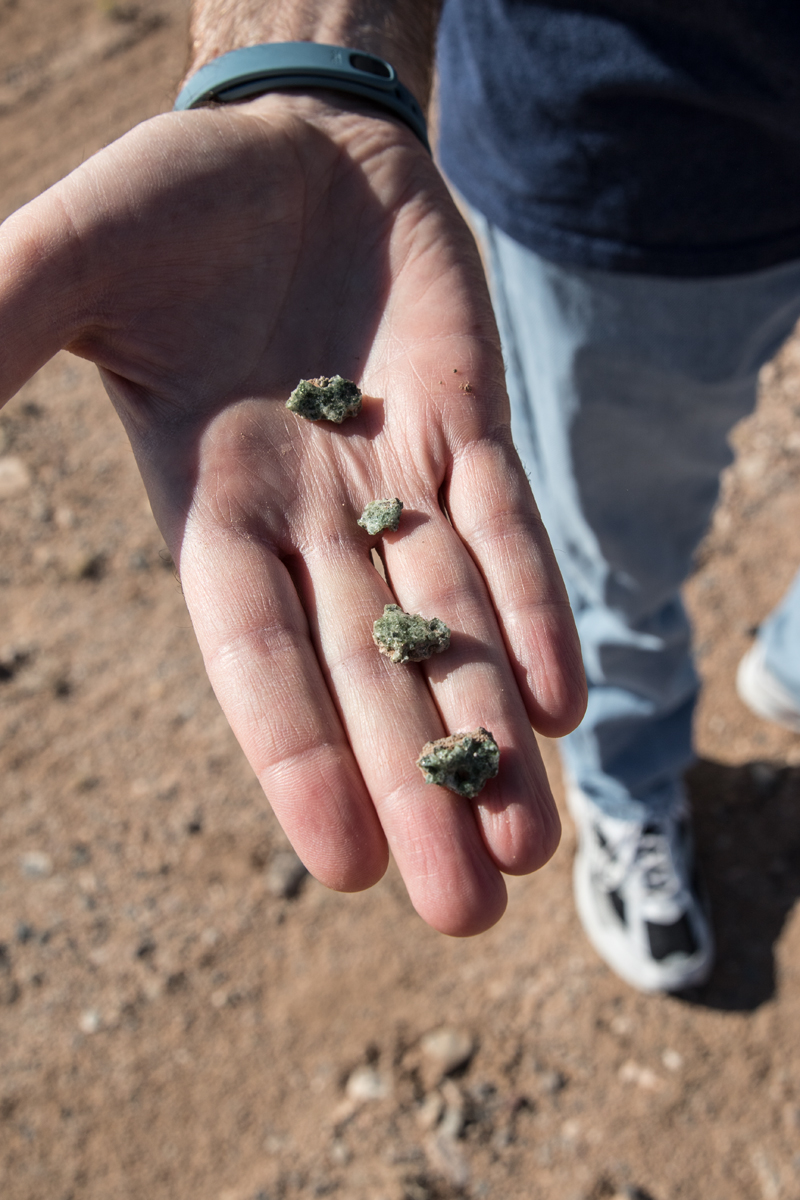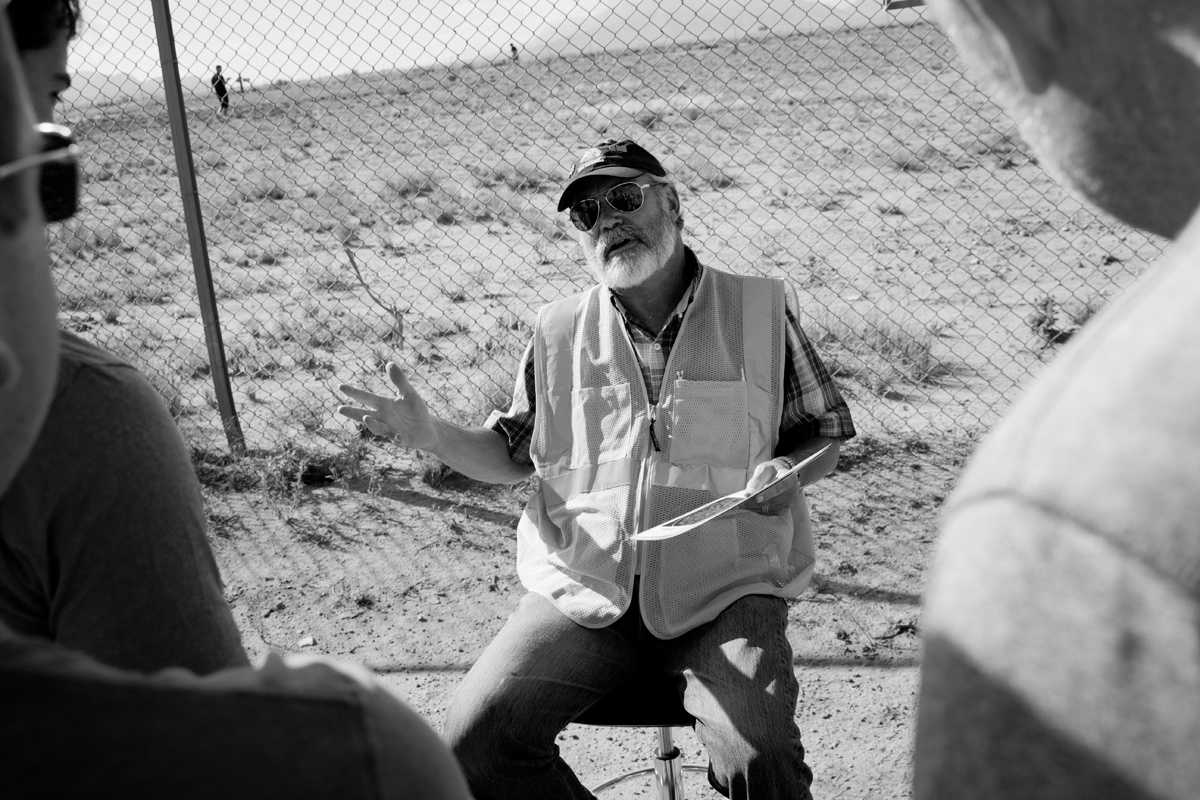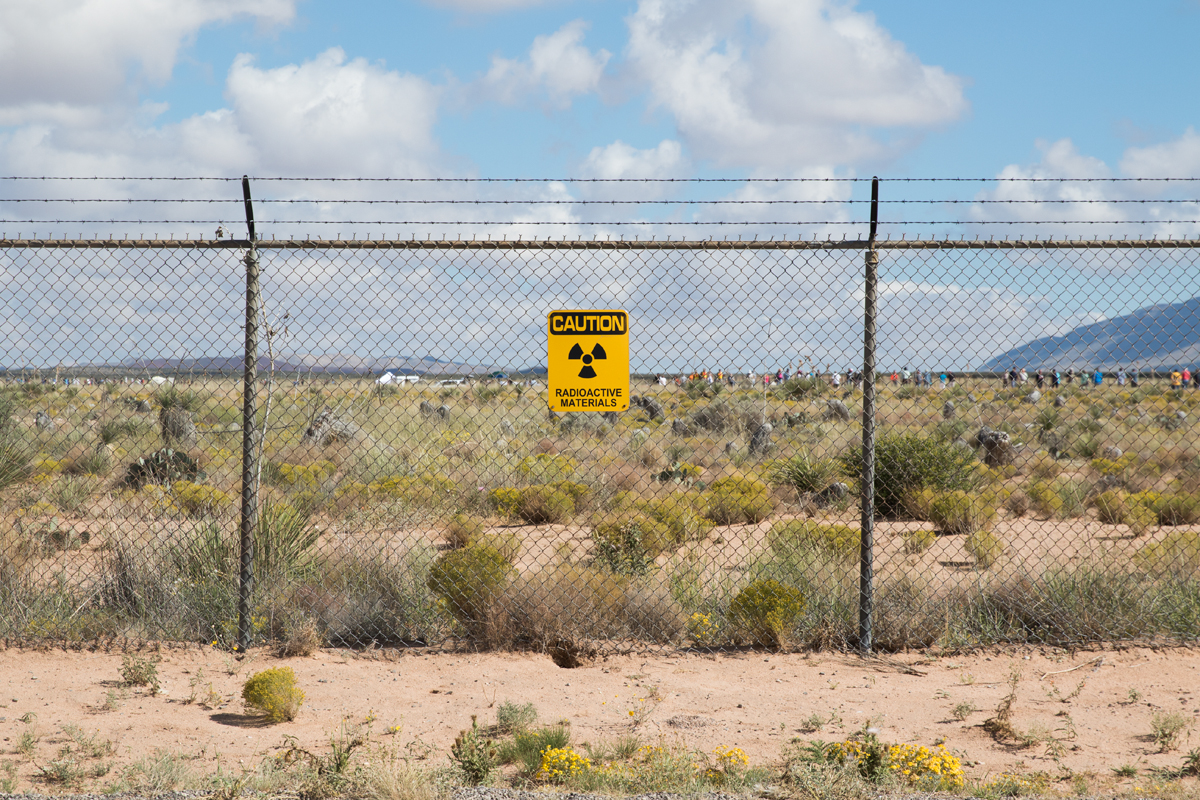Field notes from Trinity 10.01.16
I'm excited, call it Christmas-eve excited. I hastily down my breakfast burrito at the only 24 hour restaurant in Socorro, keeping one eye glued to my watch. I skip the 3rd cup of coffee.
Off interstate 25 and down into the valley towards White Sands Missile Range, the morning fog is gorgeous and almost impenetrable, veiling the remoteness of the place. Nearing the 12 mile mark I'd mentally calculated, a few cars appear, turning down the road towards Stallion gate.
With the fog burned off, we all come to a stop. The guard station is in sight about a half mile down the road. Several dozen cars are ahead of me, and a swiftly growing number sprawl behind. Engines off, we wait, parked in place as the sun heats up. People gather roadside, chat, and crane their necks for the any indication of activity at the gate, signaling the start of this biannual open-house in the middle of nowhere. An enthusiastic man runs down the queue carrying a cardboard box clad with a trefoil hazmat sticker while calling out, "Everyone bring your Geiger counters?! Who wants some uranium ore?" On his slower return pass he concedes how heavy it is. Further down the road a couple of Mexican women and their children set up an ad hoc burrito stand (if only I'd known).
Around 8:20, engines start and we inch forward. One point I’ve forgotten until now surges anxiety up my throat: I wonder if anyone will care about New York drivers licenses not technically being Real-ID Act compliant. I'd accidentally left my back-up documentation in Brooklyn during my habitual last minute packing. A couple of cars are turned away at the gate. Okay, my turn. An anonymous security contractor in black sunglasses holds my ID, puts on a sufficient show of scrutiny, waves traffic forward and wishes me a nice day.
It takes another 20 minutes’ driving from the gate to the site, through similar arid terrain that characterizes much of central New Mexico, though heavily littered with explosive debris (as many signs warn).
Pulling into the parking lot, cars are diverted into neatly arranged rows by a crew of airmen. The atmosphere is akin to a county fair. I pull what lenses I think I'll use, throw the bag on my shoulder and head towards the chain link corral that encircles the ground beneath where the first atomic detonation took place 71 years ago. Notably, there's no crater, just a few acres of flat ground, slightly depressed relative to the its surroundings.
Along the walk to ground zero, the National Park Service, along with several experts (I believe from Los Alamos National Laboratory) have set up camp, answering questions and offering demonstrations. There’s a trailer selling t-shirts and souvenirs.
A lava-rock obelisk serves as a historical marker at the hypocenter of the blast, and attracts a small photo-hungry crowd. Group shots, selfies, serious and not-so-serious. A man meanders around, geiger counter in hand. A few clicks here and there, nothing really note-worthy. I find myself with everyone else, staring at the ground hunting for trinitite like lost change. Similar to catch and release fishing… you find it, pick it up, marvel at it and throw it back. I assume the warnings about jail time if you remove any of the radioactive glass from the site are serious, though I'm sure a few pieces will make their way into more daring pockets.
I walk around the sequestered piece of desert for 2 hours, occasionally strike up conversations, point out decent caches of green glass, look through the historic photos posted on the far fence, and listen to different bits of technical info from the staff. I’m estimating the likelihood of a few stray plutonium atoms hitching a ride on my shoes.
Beneath the nerdish joy, there’s something else.
The casualness feels off. I love the curiosity and glee of the armchair scientist crowd (in which I consider myself). I love the history buffs, the researchers who've been in the field for decades sharing their knowledge, the RV tourists who happen to be driving through and want to check a landmark off their list. Indulging the interest, whatever the motivation isn’t the problem, but I feel a lack of expression of the complexity of what happened here. This experiment helped set in motion the death of tens of thousands in the weeks following, by some estimates over 200,000 between Hiroshima and Nagasaki, not to mention cumulative residual effects. However you look at the justification for using the Bomb on Japan, it's a staggering loss of human life, executed in an instant. It set us down an expensive, toxic, absurd and existentially threatening path in the decades to follow, one that's, at best, been in a delicate remission since. On significant anniversaries of the test there’s more public ceremony which speaks to this, but today the novelty of the site is center stage: holy shit, look at this radioactive glass! Standing here has me feeling increasingly solemn and awestruck in a way I haven’t anticipated.
In 2009 I visited another nuclear test site called Project Faultless in central Nevada. It was an underground detonation, fired 23 years after Trinity, designed to determine the geologic stability of the region and its potential for expanded weapons testing. Faultless, with some irony, unexpectedly sank and fractured the ground for miles, halting other planned explosions and shelving the entire idea. What remains is a section of the drill-hole liner and a plaque with information about the test and a warning about excavation. No fences, no officiating, the land is public. That field trip was more of an oddball adventure and didn't feel the need for moral contemplation. People vaporizing didn’t cross my mind, I was fascinated by the upheaval and collapse of the valley floor, the reactor-like radiation levels thousands of feet below and the expensive technical folly of the government. The ground in central Nevada didn’t feel like a proxy gravesite, it didn’t have the connection that Trinity does.
The Christmas-eve glow is dimmed. Instead of looking at bubbles in the trinitite and imagining sand being swept into the fireball and rained down as molten glass, I'm imagining myself in its place along with everyone here for that matter... and wonder if anyone around me is having the same quiet and dreadful thought.
I lift my phone out at arms length, shoot the selfie, and wander out to the rental car. Driving back through Stallion gate and on to the county highway, a small group of advocates, downwinders and cancer victims has clustered at the intersection, protesting in front of a film crew. Directly across the road is a handmade sign posted: Trinitite for sale, 17 miles.
all content © Justin N. Lane 2016
The Trinity Site is open to visitors on the first Saturdays of October and April.
